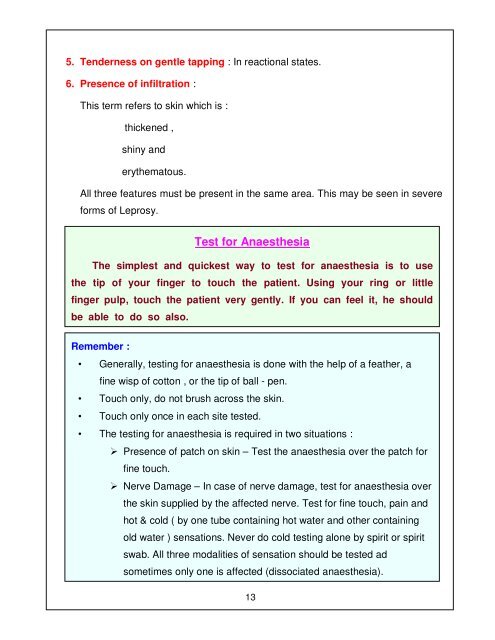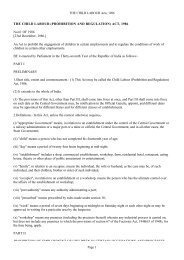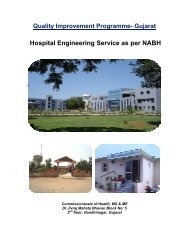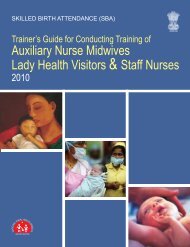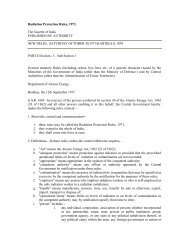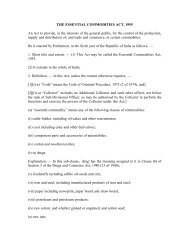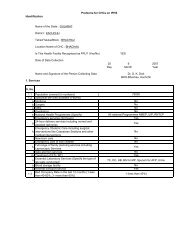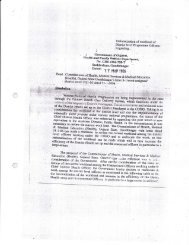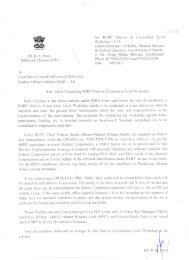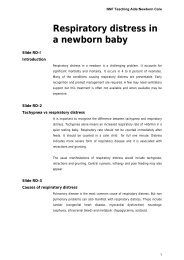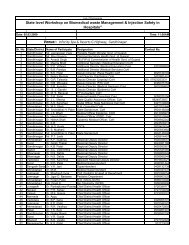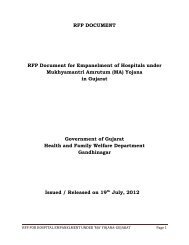Leprosy Training Module for Medical Officers
Leprosy Training Module for Medical Officers
Leprosy Training Module for Medical Officers
Create successful ePaper yourself
Turn your PDF publications into a flip-book with our unique Google optimized e-Paper software.
5. Tenderness on gentle tapping : In reactional states.<br />
6. Presence of infiltration :<br />
This term refers to skin which is :<br />
thickened ,<br />
shiny and<br />
erythematous.<br />
All three features must be present in the same area. This may be seen in severe<br />
<strong>for</strong>ms of <strong>Leprosy</strong>.<br />
Test <strong>for</strong> Anaesthesia<br />
The simplest and quickest way to test <strong>for</strong> anaesthesia is to use<br />
the tip of your finger to touch the patient. Using your ring or little<br />
finger pulp, touch the patient very gently. If you can feel it, he should<br />
be able to do so also.<br />
Remember :<br />
• Generally, testing <strong>for</strong> anaesthesia is done with the help of a feather, a<br />
fine wisp of cotton , or the tip of ball - pen.<br />
• Touch only, do not brush across the skin.<br />
• Touch only once in each site tested.<br />
• The testing <strong>for</strong> anaesthesia is required in two situations :<br />
Presence of patch on skin – Test the anaesthesia over the patch <strong>for</strong><br />
fine touch.<br />
Nerve Damage – In case of nerve damage, test <strong>for</strong> anaesthesia over<br />
the skin supplied by the affected nerve. Test <strong>for</strong> fine touch, pain and<br />
hot & cold ( by one tube containing hot water and other containing<br />
old water ) sensations. Never do cold testing alone by spirit or spirit<br />
swab. All three modalities of sensation should be tested ad<br />
sometimes only one is affected (dissociated anaesthesia).<br />
13


